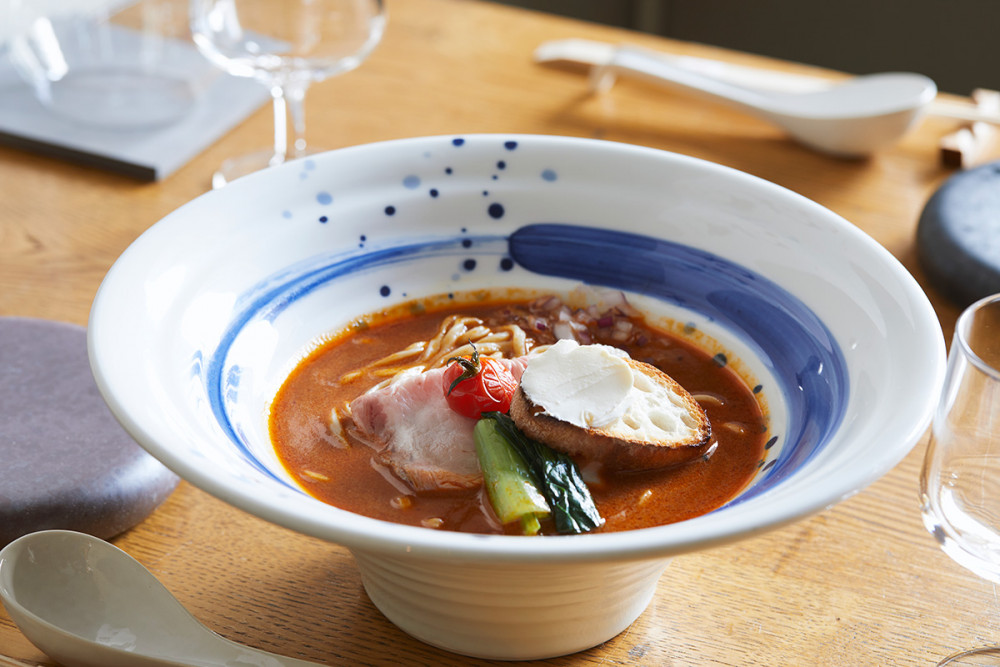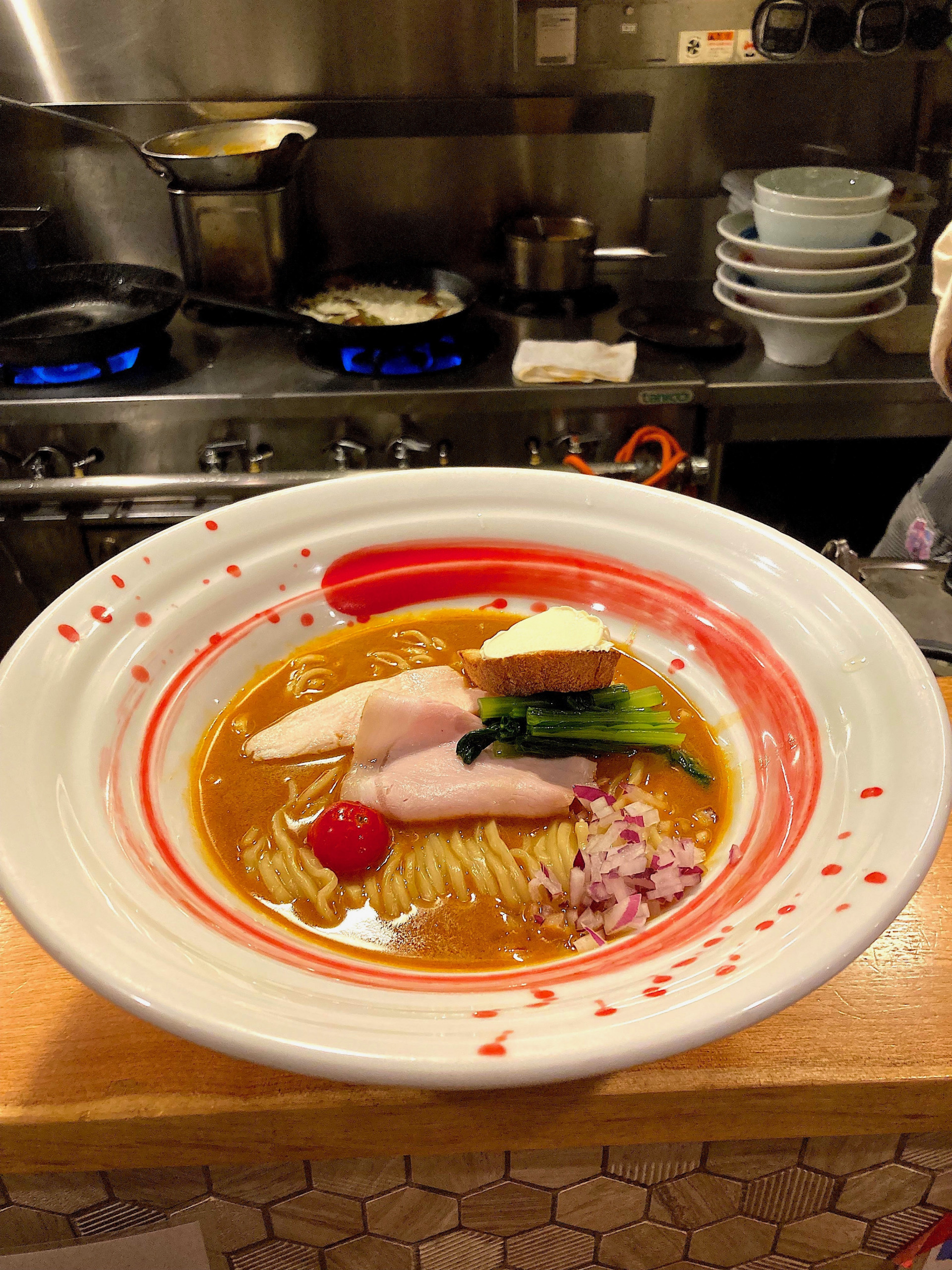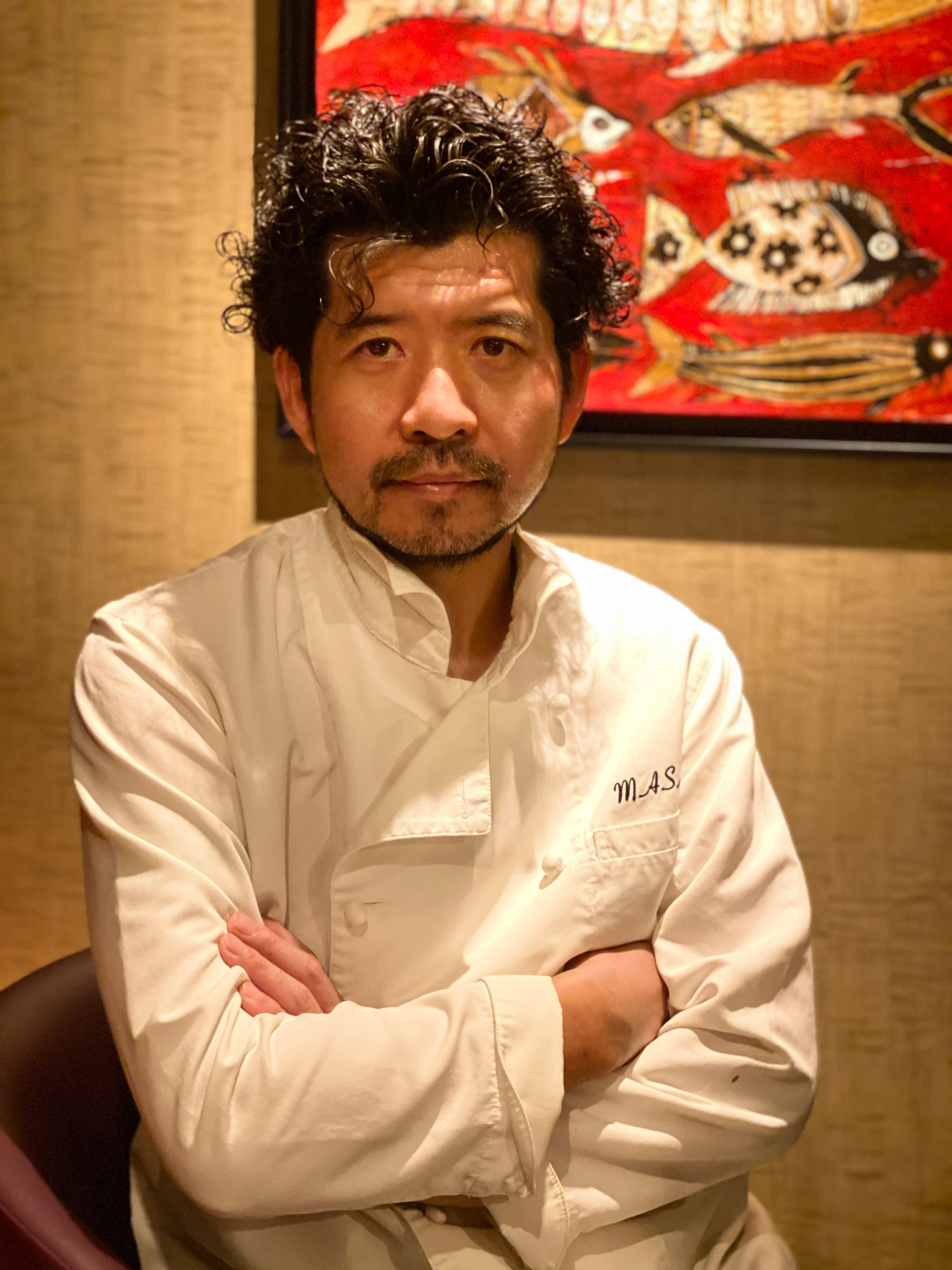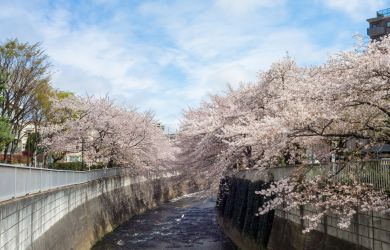
November 7, 2024
Lobster Ramen in Tokyo: French Food for the People
Highbrow French meets Japan’s working-class superstar
By Elina Garone
Before I share about the lobster ramen, here’s a tip: When looking for lunch spots in Tokyo, it’s always a good sign to see a line of suited and lanyard-clad professionals at the restaurant’s door. When it comes to finding affordable, filling, and no-frills-delicious meals for busy lunch breaks, Japanese office workers don’t mess around.
So naturally I was happy when I arrived at Jimbocho’s Ebimaru Ramen and saw a flock of them by the entrance, ready for a speedy meal before heading back to the grindstone.
The Appetizer

As soon as I stepped inside, the rich aroma of lobster welcomed me—not merely drifting in, but wrapping me in a warm, smothering hug. I sat at the counter and ordered the original Ebimaru ramen (¥1,255), and almost instantly a tiny bowl was placed in front of me. Far from ramen; it was an amuse-bouche of cold corn soup, sprinkled with smokey-sweet cajun spice.
Who says you have to choose either a big bowl of hot broth and greasy noodles or a delicately crafted French soup? Here, Japan’s fast food kingpin has its very own My Fair Lady moment, incorporating elements of French fine dining while keeping its accessibility and charm.
The Bowl

True to the ramen-joint style of losing no time, my bowl was served right as I finished the appetizer. The soup was deep orange, cooked with lobster shells, brandy, wine, and vegetables. Generous slices of sous-vide pork sat on their bed of noodles, curiously accompanied by a slice of baguette with a slab of sour cream.
At the risk of outing myself as a culinary pervert, I must report on the mouthfeel of the first bite. It was luxury: the lobster bisque lined my tongue with a velvet carpet, inviting the noodles. The noodles, in turn, were thick and chewy enough to hold their own in this creamy soup.
A French Take on Japanese Food Theory
Having said that, as much as I love lobster, the richness of the broth did become overwhelming about midway. This is when that sour-creamed baguette came in handy. Tip 2: It’s time for Ajihen. Ajihen is a concept in Japanese cuisine where you add a twist to your bowl of ramen halfway through. It helps cut through the fat when it becomes too heavy or changes the flavor to something new. The sour cream added a hint of acidity, while their house-made shrimp chili oil added a welcome kick.
Speaking of cutting through fat, I also want to mention their wine menu. This writer found herself craving a glass of sparkly which would’ve uplifted the heftiness of the broth. Although, for the record, @editors, I did not indulge, that would be my recommendation if you’re here for dinner or don’t have to work afterward.
Lobster Ramen…Risotto?

But the lobster fest did not stop there. Even as my stomach was reaching near max capacity by this point, I could not resist ordering the house specialty: a make-your-own risotto (¥546). The waiter came with a screaming hot stone bowl of rice and grated a mountain of parmesan atop. Tip 3: They’ll grate until you tell them to stop, which I learned by watching the waiter’s face slowly turn to concern as I allowed the pile of cheese to grow into glory (I’ve come this far, I thought, why deny myself now?) I mixed in some leftover ramen broth as I was told, and dove into the finale of this lobster fusion extravaganza.
If This is Heresy, Call Me The Antichrist
Chef Masa, Ebimaru Ramen’s owner, is a professionally trained French chef with no formal background in ramen. Some may call this heresy—ramen is an art that takes years to master. While I can appreciate this argument, I believe I speak for many when I say that as long as the food is good, purism be damned. French cuisine and ramen is an unconventional marriage, but once you try it you see that somehow it works. And why shouldn’t it? Noodles have long thrived in deep, complex broth, and Tokyo’s ramen community is always hungry for exciting new bowls.

It wasn’t just the scent of lobster wafting from the restaurant that brought the office workers to this establishment; it’s the fact that here, you can experience good quality, novel cuisine with convenience, at an accessible price.
This lobsterfest-in-a-bowl left me happily full and looking forward to more daring bowls being created in Tokyo. And I absolutely positively did not fall into a food coma at my desk afterward. Definitely not…
Still hungry? Here are all the best eats in Tokyo.







